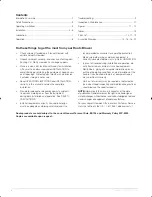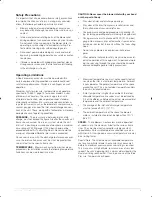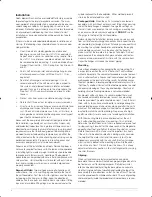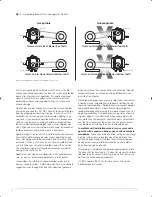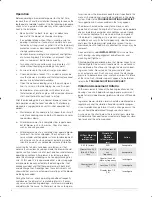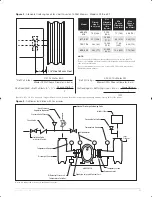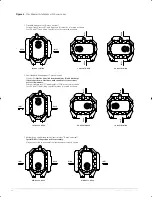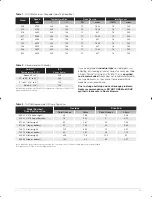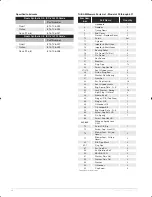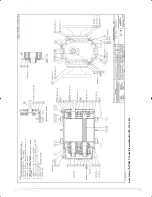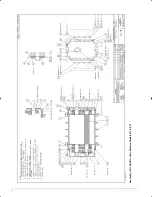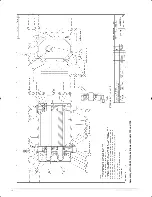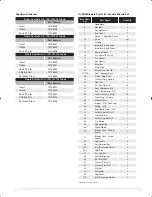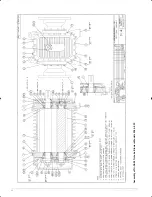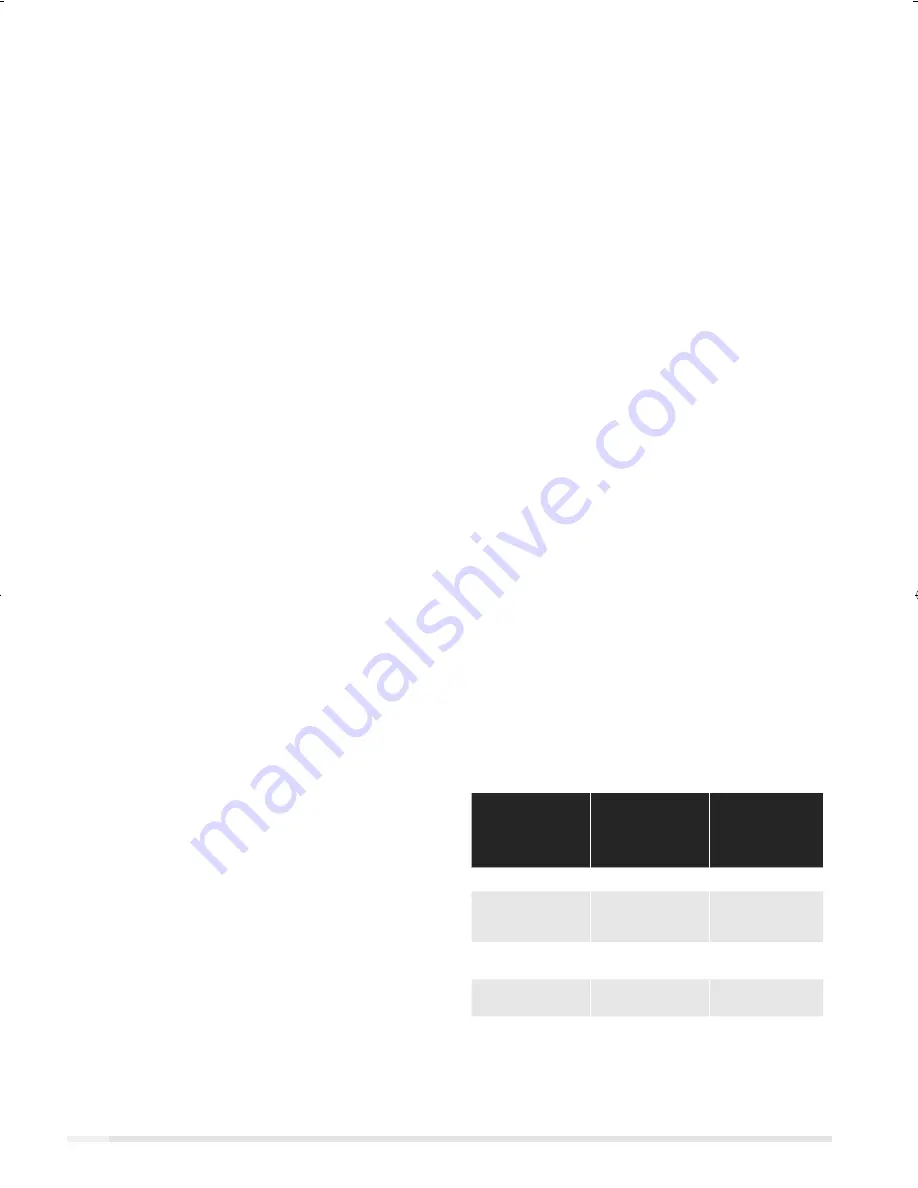
GEA19684 ISRB_2008 rev._11.15
8
Operation
Before operating a blower under power for the first time,
recheck the unit and the installation thoroughly to reduce the
likelihood of avoidable troubles. Use the following procedure
check list as a guide, but consider any other special condi-
tions in the installation.
•
Be certain that no bolts, tools, rags, or debris have
been left in the blower air chamber or piping.
•
If an outdoor intake without filter is used, be sure the
opening is located so it cannot pick up dirt and is pro-
tected by a strong screen or grille. Use of the temporary
protective screen as described under INSTALLATION is
strongly recommended.
•
Recheck blower leveling, drive alignment and tightness
of all mounting bolts if installation is not recent. If belt
drive is used, adjust belt tension correctly.
•
Turn drive shaft by hand to make sure impellers still
rotate without bumping or rubbing at any point.
•
Ensure oil levels in the main oil sumps are correct.
•
Check lubrication of driver. If it is an electric motor, be
sure that power is available and that electrical overload
devices are installed and workable.
•
Open the manual unloading valve in the discharge air
line. If a valve is in the inlet piping, be sure it is open.
•
Bump blower a few revolutions with driver to check
that direction of rotation agrees with arrow near blower
shaft, and that both coast freely to a stop.
After the preceding points are cleared, blower is ready for
trial operation under “no-load” conditions. The following
procedure is suggested to cover this initial operation test
period.
a. Start blower, let it accelerate to full speed, then shut off.
Listen for knocking sounds, both with power on and as
speed slows down.
b. After blower comes to a complete stop, repeat above,
but let blower run 2 or 3 minutes. Check for noises,
such as knocking sounds.
c. After blower comes to a complete stop, operate blower
for about 10 minutes unloaded. Check oil levels. Ob-
serve cylinder and headplate surfaces for development
of hot spots such as burned paint, indicating impeller
rubs. Be aware of any noticeable increase in vibration.
Assuming that all trials have been satisfactory, or that
necessary corrections have been made, the blower should
now have a final check run of at least one hour under normal
operating conditions. After blower is restarted, gradually
close the discharge unloading valve to apply working pres-
sure. At this point it is recommended that a pressure gauge
or manometer be connected into the discharge line if not
already provided, and that thermometers be in both inlet
and discharge lines. Readings from these instruments will
show whether pressure or temperature ratings of the blower
are being exceeded.
During the final run, check operating conditions frequently
and observe the oil levels at reasonable intervals. If exces-
sive noise or local heating develops, shut down immediately
and determine the cause. If either pressure rise or tempera-
ture rise across the blower exceeds the limit specified in this
manual, shut down and investigate conditions in the piping
system. Refer to the
TROUBLESHOOTING CHECKLIST
for suggestions on various problems that may appear.
The blower should now be ready for continuous duty
operation at full load. During the first few days make periodic
checks to determine whether all conditions remain steady,
or at least acceptable. This may be particularly important
if the blower is supplying air to a process system where
conditions can vary. At the first opportunity, stop the blower
and clean the temporary inlet protective screen. If no ap-
preciable amount of debris has collected, the screen may be
removed.
See comments under
INSTALLATION
. At this same time,
verify leveling, coupling alignment or belt tension, and
mounting bolt tightness.
Should operating experience prove that blower capacity is a
little too high for the actual air requirements, a small excess
may be blown off continuously through the manual unload-
ing or vent valve. Never rely on the pressure relief valve
as an automatic vent. Such use may cause the discharge
pressure to become excessive, and can also result in failure
of the valve itself. If blower capacity appears to be too low,
refer to the
TROUBLESHOOTING CHECKLIST
.
Vibration Assessment Criteria
With measurements taken at the bearing locations on the
housings, see chart below for an appropriate assessment
guide for rotary lobe blowers rigidly mounted on stiff founda-
tions.
In general, blower vibration levels should be monitored on a
regular basis and the vibration trend observed for progres-
sive or sudden change in level. If such a change occurs, the
cause should be determined through spectral analysis.
As shown on the chart below, the level of all pass vibration
will determine the need to measure discrete frequency vibra-
tion levels and the action required.
All Pass Vibration
in/sec-pk
(mm/sec-rms)
Discrete Fre-
quency
Vibration
in/sec (mm/sec-
rms)
Action
0.45 (8) or less
N/R
Acceptable
Greater than 0.45
(8) but1.0 (18) or
less
0.45 (8) or less @
any
frequency
Acceptable
Greater than 0.45
(8)@ any frequency
Investigate
Greater than 1.0
(18)
Less than 1.0 (18)
Investigate
Greater than 1.0
(18)
Investigate
GEA19684_ISRB-2008_Tri-RAM_rev02.16.indd 8
15/02/2016 11:17:05
Summary of Contents for Roots Tri-RAM 409
Page 1: ...www howden com RootsTM Tri RAMTM Tri lobe Blowers Installation Operation Maintenance Manual ...
Page 15: ...15 GEA19684 ISRB_2008 rev _11 15 Assembly of Tri RAM Tri Lobe Blowers Models 409 413 416 ...
Page 16: ...GEA19684 ISRB_2008 rev _11 15 16 Assembly of Tri RAM Tri Lobe Blowers Models 617 621 ...
Page 18: ...GEA19684 ISRB_2008 rev _11 15 18 Assembly of Tri RAM Tri Lobe Blowers Models 722 and 728 ...
Page 20: ...GEA19684 ISRB_2008 rev _11 15 20 Assembly of Tri RAM Tri Lobe Blowers Models 826 832 ...


